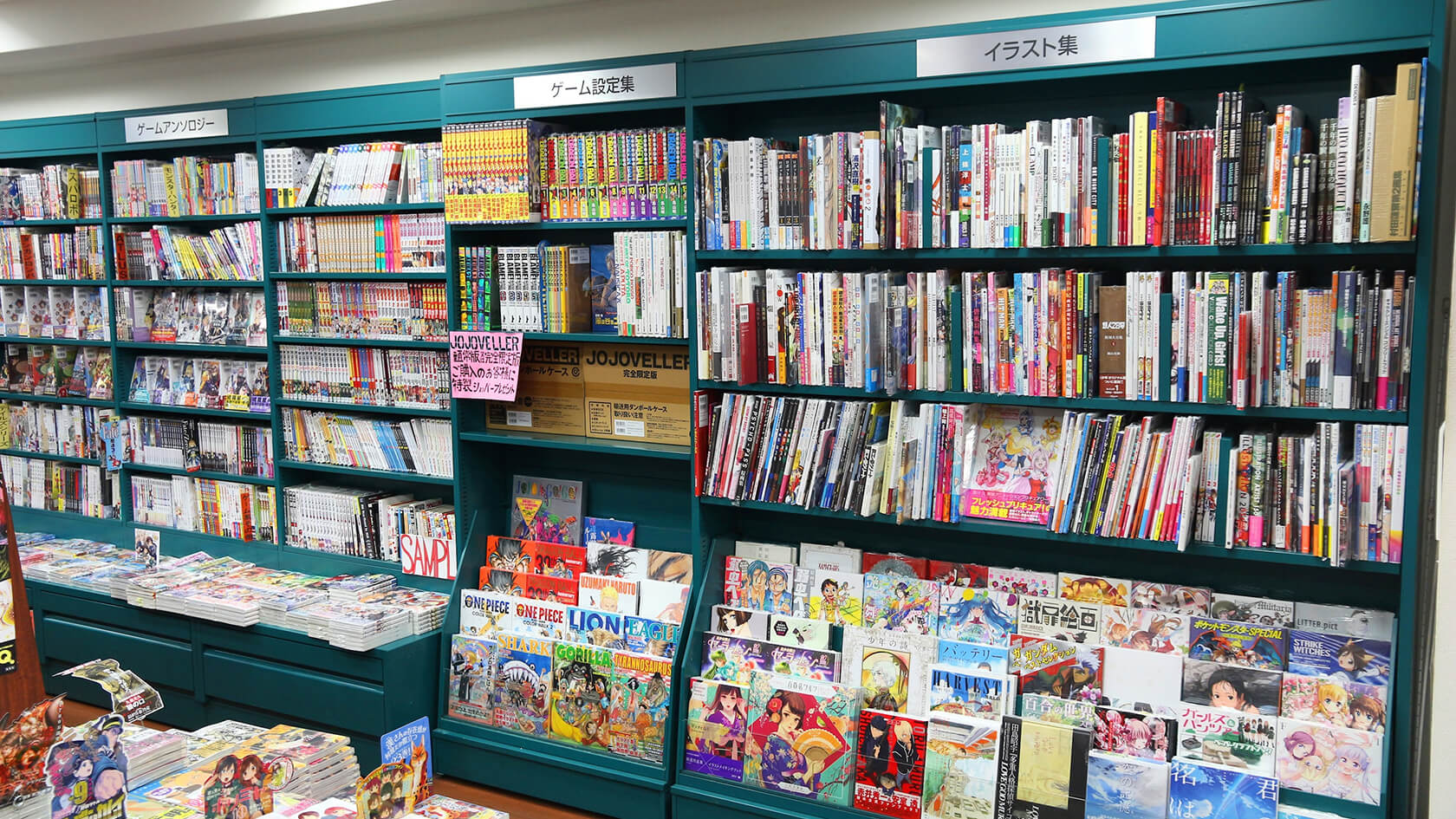Japanese Manga: The Heart of Japan’s Pop Culture

Although anime is the most popular medium of Japanese pop culture for Western audiences, roughly 60% of our favorite titles wouldn’t have been possible without the success of the manga, or Japanese comics, from which they were adapted. Of all sold publications in Japan, manga accounts for 40% of these sales.
Given its dominance of the Japanese marketplace, along with its influence on other forms of entertainment, it’s time to take a closer look at manga to better understand what makes it such a unique form of visual media.
Table of contents
A Brief History of Modern Japanese Manga

The very first instance of manga is believed to have appeared around the 12th and 13th centuries in the form of the Chōjū giga, also known in English as Scrolls of Frolicking Animals and Humans. These works featured animals such as frogs and rabbits satirically behaving in very human-like fashion. The Chōjū giga is also seen as the basis for the right-to-left reading style used for manga today.
For the modern manga you may be more familiar with, inspiration in Japan came in the form of comics, cartoons, television and films that were brought over in droves from the U.S. during the late 1940s to early 1950s. Early results of that influence include the highly popular Astro Boy, which has reached prominence both within and outside of Japan.
Now, the term ‘manga’ is officially part of the English language, a testament to its ever-growing impact beyond Japan’s borders.
Understanding Different Kinds of Manga

As the popularity of manga continues to grow, there is a genre for just about any audience. With all the subgenres that have emerged, they typically fall into one of the following general categories:
-
Shōnen(少年)
Shōnen manga are geared towards a young male teen audience, usually between ages 12 and 18. Typical subject matter and tropes covered in shōnen manga include robots, heroes with superpowers and fighting in general. One of the most popular shōnen manga of all time, and regarded by many as the most influential, is Dragon Ball, written by Akira Toriyama.
-
Shōjo(少女)
Shōjo manga are written for young females. While there may be elements like fantasy worlds or superheroes similar to those found in shōnen manga, the main characters in shōjo tend to be girls, and the central themes across most stories are love, emotions and romantic relationships. Some highly regarded shōjo manga include Fruits Basket and Ouran High School Host Club.
-
Seinen(青年)
While shōnen manga are made with young boys in mind, seinen manga are aimed at adult men in the 20 to 50 age range. Seinen manga feature subject matter that tends to be a bit heavier in nature, with topics focusing on politics, or even social issues. Other topics can include sports, action and science fiction. Popular titles include Ghost in the Shell, Berserk and JoJo’s Bizarre Adventure.
-
Josei(女性)
Josei manga are made for older teen females and adult women. While shōjo manga tend to depict relationships in a more idealistic manner, josei manga offer a more realistic portrayal of romance, and usually contain more mature themes. Although this genre is aimed at women, some of the most popular manga in this category feature largely male casts. Fan favorites include Princess Jellyfish and 07-Ghost.
-
Kodomo(子供)
Kodomo manga are directed towards kids ages 10 years and younger. These manga are fairly lighthearted, teaching moral lessons with cutesy characters. Despite targeting younger audiences, children’s manga have massive appeal with all ages because of the appeal of their characters. Examples of enduring kodomo manga include Hello Kitty, Pokémon and Doraemon.
How and Where Japanese People Read Manga

Western manga fans typically buy single volumes of a particular anime to keep up with their favorite stories. In Japan, however, readers can purchase large manga magazines, which typically contain single episodes of many different stories. These magazines are published either weekly or monthly. The most popular manga magazines in Japan include:
-
Weekly Shōnen Jump
– The most heavily circulated manga magazine featuring the most popular shōnen series.
-
CoroCoro Comic
– This monthly kids manga magazine that publishes kodomo series such as Doraemon, and often promotes toys and video games related to its properties.
-
Weekly Young Jump
– Published under the popular Jump line of magazines, Weekly Young Jump is where to find the latest seinen manga stories.
-
Ciao
– This monthly magazine launched in 1977, and publishes the newest shōjo manga stories, and usually includes a free gift with every issue.
Manga Cafes
While you can catch salarymen and other casual manga fans posted up at a convenience store magazine rack, or on the train catching up on the latest stories, the best place to go to fully immerse oneself in your favorite series is a manga cafe.
With over 1,000 such establishments located throughout Japan, manga cafes can typically be found close to train stations, offer incredibly affordable accommodations, and most are open 24 hours.
With an eight-hour private cubicle rental costing roughly 3,000 yen, you can enjoy amenities that include a large manga collection to choose from, along with unlimited WiFi access and soft drinks at no extra cost. Other features that may incur an extra fee include access to showers or online gaming equipment.
Get Reading

As stated before, although anime is more popular in the West, manga is the basis for 60% of anime, and many die-hard fans of both prefer the source material. Another advantage manga readers have over anime viewers is knowing how a story develops, sometimes months before anime-only viewers. Furthermore, the popularity of anime has only helped increase interest in manga, introducing the medium to a new generation of loyal fans.
If you want to know what makes manga such a cherished medium among Japanese pop culture, and why it continues to spread like wildfire throughout the world, pick up a volume for yourself and find out.
Motto Japan, the community platform to support foreigners with the foundation for life in Japan, including Japanese study, job opportunities, and housing service. Motto Japan Media will provide a wide variety of information for Japanese fans all over the world, to create a cross-cultural environment and enrich the life of foreign residents in Japan!













Leave a Reply